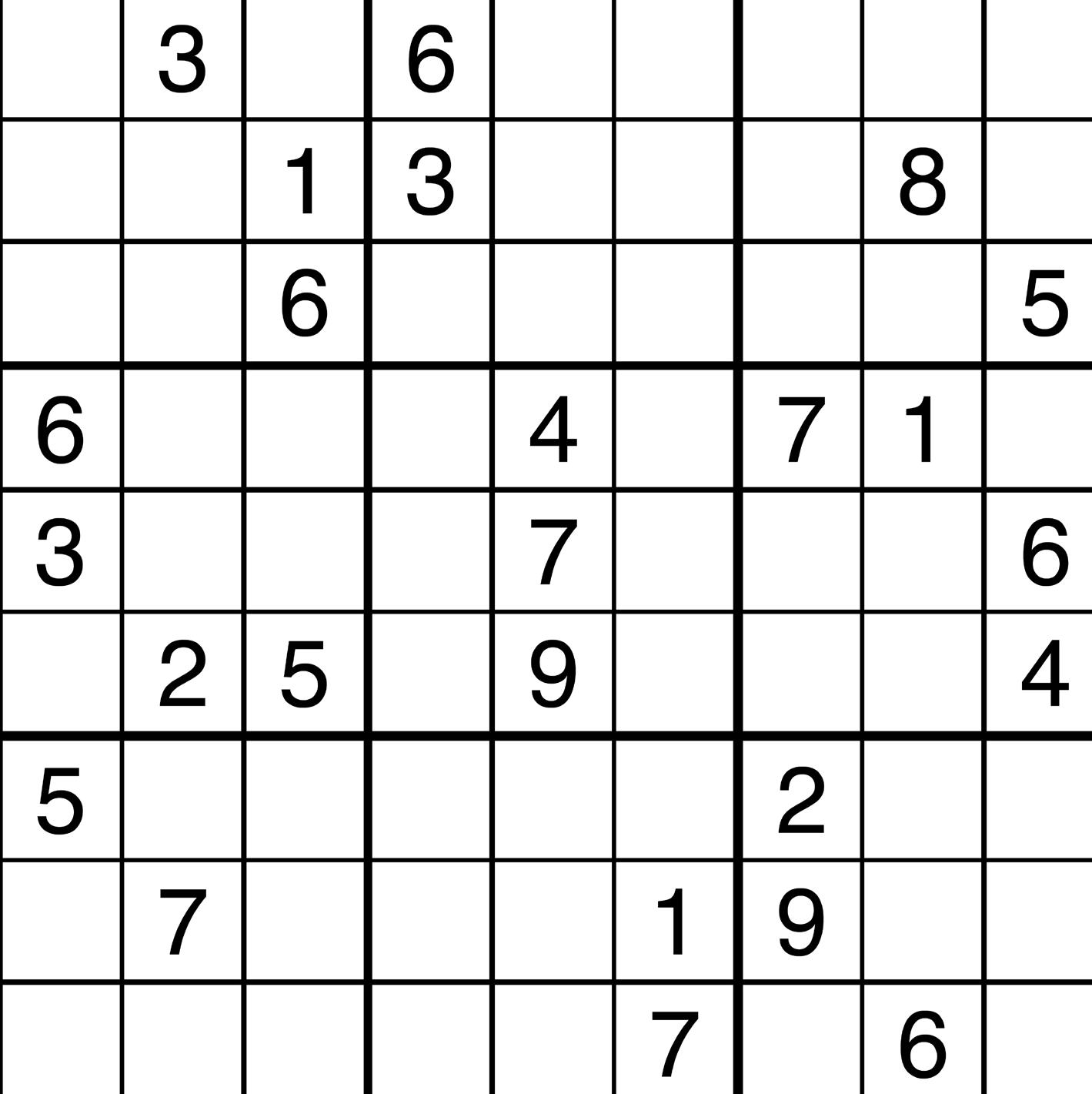




By Justin Brewster STATESMAN REPORTER
As the end of the semester approaches, multiple changes in the Taggart Student Center are planned, particularly for the USUSA Senate Chambers and the Skyroom, the restaurant located on the fourth floor.
There are plans to change the carpets for the USUSA offices, updating them and removing asbestos.
The offices will be empty by Nov. 15, with the recarpeting beginning on Nov. 18.
The renovations are expected to continue throughout winter break, with an estimated completion time of the beginning of next year.
In the meantime, academic senators and Executive Council officers will work in the Senate Chambers. They will also host their office hours within the chamber. Weekly meetings of the Academic Senate and the Executive Council will continue.
“They’re just really outdated,” said Paige Blair, public relations director for USUSA. “A lot of the offices, especially in the Student Involvement and Leadership Center, have already been renovated in the last couple of years, and so they just wanted to update a lot more of the offices so that they were nice and new for a lot of students to come in and work in.”
The main reason why the carpet change will take as long as it is suggested is for asbestos abatement.
“With this being kind of an older building, one of the safety precautions we take when doing things like carpet replacement is an abatement,” said Matthew Richey, USUSA president. “It is a safety precaution to ensure that any changes that are made to the TSC don’t kick up any asbestos and result in injuries to students down the line.”
Although the levels of asbestos within the TSC are low, and not considered dangerous to students’ health, changing and modifying the TSC might kick up asbestos. Abatement helps ensure students, faculty, staff and workers aren’t harmed by it. This lengthens the time necessary to change the carpet.
“Carpet change in a lot of other, newer buildings could take a couple of days max,” Richey said. “We’ll be doing this for a few weeks because of the processes that we have in place.”
The other major renovation project occurring in the TSC is the Skyroom.
Pre-Covid-19, the Skyroom was open for buffet-style lunches on weekdays but frequently hosted university events. During the pandemic, the restaurant was shut down, open only for events.
At the time of publication, demolition work for the remodeling has begun, with an expected completion in early summer 2025. Progress for the renovations will be posted on the USU Dining Services website.
“The biggest problem we had up there was the Skyroom was trying to be a restaurant and an event center, and it didn’t do either one well,” said Alan

Most of the planned menu is Italian, with appetizers like mushroom risotto, entrees like chicken parmesan or margherita pizzas and desserts like tiramisu.
A soup and salad bar will be added, alongside coffee machines and a bar that serves mocktails and non-alcoholic beers and wines.
Major overhauls of the layout are planned, including an enclosed veranda overlooking the campus and a refurbishment of the kitchen.
This restaurant is open for students, faculty, staff and the general public, with parking available to the public at the Big Blue Terrace. When customers use the parking terrace the first time, they are expected to pay for parking but will receive a code for future visits.
“We were really focused, and we’re trying to keep all our prices for a full-service restaurant to be between 10 and 15,” Andersen said.
Andersen, the executive director of Dining Services.
The Skyroom is planned to be a full-service restaurant that serves breakfast, lunch and dinner Monday through Thursday, with Fridays and Saturdays only open for catering dinnertime events.
Students, faculty and staff with block meal plans can use them at the Skyroom. Aggie dining dollars will also be accepted.
Breakfast is planned to be styled like a European patisserie, and at 11 a.m. It will turn into a full-service restaurant.

Justin Brewster is studying international studies with a minor in political science. Whenever he acquires free time, he enjoys video games, writing or comedy.
— justin.g.brewster@usu.edu
By Aubrey Holdaway STATEMAN REPORTER
Anew grassroots group is breaking down the barriers of traditional aid in Cache Valley, bringing help directly from one neighbor’s hands to another. Cache Valley Mutual Aid has recently launched, providing a platform for residents to support one another.
According to Enzo Tillitt, one of the group’s core members, mutual aid is a system where community members come together to help each other meet basic needs like food, housing or transportation.
“It’s a ground-up way to build networks and support the most vulnerable people in the community to make sure that everybody’s needs are covered,” Tillitt said.
Resources are shared unconditionally, contrasting a charity or government program model where conditions or stipulations for gaining access to help are often set.
Founded by Nicole Steinicke, Miles Folsom and Cristina Chirvasa, CVMA was inspired by the success of similar efforts in Salt Lake County and growing needs within Cache Valley itself.
“I was with Salt Lake Community Mutual Aid back when they first started during COVID, and I really missed it when I moved up to Logan,” Chirvasa said. “Then I started talking to Nicole and realized that we both care about this and have the skills to put something together.”
Mutual aid groups are distinct from other organizations in their effort to decentralize, using consensus decision-making across participating people rather than placing leadership within a

closed executive team. CVMA follows this model as well.
“We all come to the table and make decisions together, and I think that’s one of our strengths,” said Ezra Robertson, CVMA member. “It helps us better utilize our different abilities because we don’t need to go through a formal system to approve something we want to do.”
The rising costs of living have pushed more residents to seek help with basic expenses like food and rent, and Steinicke saw mutual aid as a way to fill gaps left by traditional forms of assistance.
“I’ve worked in a lot of social work and nonprofit jobs and seen how people don’t get their needs met,” Steinicke said.
Aid can be requested from CVMA through email or social media. There are no income requirements or extensive

vetting — anyone in need can reach out for support.
“A lot of people think they have to be getting kicked out of their apartment or have no food to ask for assistance,” said Sophia Anderson, another key organizer.
In its first few months, CVMA has organized events to build resources and strengthen community bonds. Recent activities included a benefit concert at Whysound, a booth at the Cache Valley Gardener’s Market offering free coffee and donuts and a headshot drive to support job-seekers and students.
“We’re trying to find ways to formulate connections, break down barriers and offer a range of different events and services,” Steinicke said.
Looking ahead, CVMA plans to host more events, increase volunteers and learn more about what the community needs through partnerships with other groups in Cache Valley.
“We’re hoping to continue to form more relationships with organizations in the community,” Steinicke said. “We’ve met with CRIC [Cache Refugee and Immigrant Connection], we’re working with Logan Pride and we’re going to be working with the William A. Bernard Warming Center.”
With the colder months approaching, CVMA organizers are preparing to launch a joint jazz benefit concert and winter supply drive, gathering winter essentials for residents who might otherwise struggle to afford them.


Aubrey Holdaway is studying print journalism. She loves short films, Park City and the band Churchball.

By Layla Alnadar STATESMAN REPORTER
Each year, the temperature drops and the days get shorter as winter approaches, and this can have a real effect on students’ well-being, and the balance of university life can quickly slip. It is a common challenge that can be magnified in the winter, but making use of the web of resources Utah State University offers can have a meaningful impact.
Sara Adkins, California native and sophomore at USU, recounts adjusting to Logan’s climate.
“I had a hard time getting used to the cold and the snow,” Adkins said. “In California, you can pretty much do anything all year long.”
Adkins said skiing is a good release for her in the winter.
“I love skiing. Another thing I found helpful is going to the ARC — I love the windows there and the natural light. I love the environment of people working out because it motivates me,” Adkins said.
USU Extension professor Troy Allan urged students to visit the Student Health and Wellness Center, especially in the winter. They can receive basic medical and wellness care, and most services are covered by the student health fee paid by every student each semester.
“As I was walking around campus and chatted with students, I couldn’t help but notice how many were balancing the pressures of school with smiles on their faces,” Allan said. “Winter is a time when students should pay close attention to their physical and mental health as the cold and darkness can impact our mood and motivation.”

Students can schedule appointments at the health center to meet with a nutritionist, councilor or specialist.
“Balancing academics, social life and self-care can be tough — especially when you’re far from home or feeling the added strain of limited daylight,” Allan said. “I encourage all students, no matter your current state of wellness, to explore what USU Health and Wellness has. Visit our webpage, schedule an appointment or attend a free seminar.”
Students often share the sentiment that they struggle to utilize resources, and some don’t know about them.
USU faculty work to help and support students navigate difficult circumstances.
“Logan winters, like much of Utah, offer more than a picturesque setting,” Allan said. “The cold, dark winters can provide an opportunity for self-discovery and community-building. By taking advantage of the resources provided by USU Health and Wellness, trying new experiences, setting routines and connecting with others, I believe USU students can transform winter’s challenges into opportunities for growth and connection.” Allan said it can be tempting to stay in and huddle as it starts to get cold, but this can lead to more feelings of isolation. He encouraged students to take advantage of USU outdoor programs like snowshoeing trips and indoor equine events.

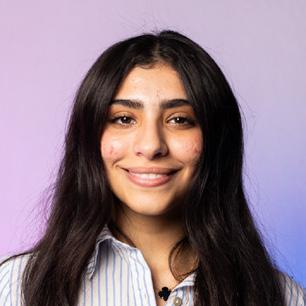
Layla is studying public health. She loves music, hiking, writing and the sun.
— a02414012@usu.edu

Oct. 10
USU K-9 Sage and Officer Nebeker spent time at Cache High School working with the resource officer and school therapist.
Nov. 6
USU Police EOD K-9 Team performed a pre-event sweep of the Dee Glen Smith Spectrum ahead of a USU men’s basketball game.
Nov. 7
A report of a dog left in a vehicle was made to USUPD. The responding officer located the vehicle and found the animal in good condition. The owner was contacted, and it was determined the dog was in no danger.
Nov. 6-8
The U.S. Department of Justice Civil Rights Division visited USU Logan campus as a part of a settelment agreement following a Title IX investigation. More information can be found by emailing community.USU@doj.gov.
By Esther Owens STATESMAN REPORTER
With the ski and snowboard season about to begin, the USU Snow Club’s goal is to create a community for students to enjoy the season together.
The origin of the club goes back to the 1970s when its focus was on ski racing. After changing over the years to become more recreational and taking a hit from the coronavirus pandemic, the club is back on its feet.

Sineath said they are specifically working on ways to provide options for first-timers.
“This year, we’re trying to find funding to start a program that would let complete beginners go up and try everything out for free,” Sineath said. “That way, they get into it without having to pay $200 just to try it.”
Caleb Bradbury, sophomore majoring in outdoor product design and development, does marketing and content creation for the club. He became a member after stopping by their booth at Day on the Quad his freshman year.
“I love snow, and I love that culture and wanted to be involved,” Bradbury said.
Providing a community that students can be involved in is a main focus of the club.
“We try to connect people because it’s always easier to be outside when you have friends to go outside with,” Sineath said. “That’s one of the really big emphases we have.”
Through the club, students can join group chats to arrange carpools and find other people to head up to the mountain.
“Before I joined the Snow Club, I didn’t really have any friends that skied,” Sineath said. “Now, I go skiing, and every other person I see, I know. And that’s pretty cool.”
In addition to skiing and boarding together, the club hosts barbecues at Beaver Mountain as well as other events like a wax night scheduled for Dec. 6.
“You can come to the Directive workshop, and we do a demo of how to wax your own gear, maintain it and get it ready for the season,” Bradbury said.
Sineath said while being a member provides advantages, everyone is encouraged to show up and have a good time regardless.
“You don’t have to be a member to hang out,” Sineath said.
Any student that is interested in skiing or snowboarding with the group can expect a welcoming atmosphere.

Q&A By Lacey Cintron
Q: What is your favorite aspect of the USU community?
A: There’s kind of just a general focus on how we can make USU better. There are all kinds of clubs or individuals, like, ‘Here, let’s make sure we have bike rentals for everybody.’ Or, the SNAC pantry — it’s just a fantastic resource that we have on campus to help fellow students.
Q: Do you have advice you would give a new student?
A: See what clubs you might be interested in because there’s so much stuff that you would never even think to look into or contacts you would never be able to make if you didn’t go to those events.
Q: What has your experience been like at USU?
A: Classes have been really exciting, and I’m really enjoying the community.
Davis Sineath, senior studying biological engineering, is the club president. Originally from North Carolina, Utah’s outdoor scene is what drew him to USU.
“On the East Coast, there’s not much skiing,” Sineath said. “I knew how to ski, but I moved here and actually started skiing.”
Through connections in the outdoor industry, the club makes snow sports more accessible to students.
“We try to make the passes cheaper, make gear more accessible and provide an outlet for students to swap gear out to make the cost of entry into the sport a lot lower,” Sineath said.
Club members get a discount on the Beaver Mountain student season pass and get access to the discounted rate throughout the season. The club also provides raffles and discount codes for gear.
“The culture is really accepting and fun,” Bradbury said. “There’s no expectations or judgment on your skill level or where you’re from or if you’ve ever skied or snowboarded before. Everybody’s happy and having a good time, and it’s just fun to be around that kind of environment.”
Students interested in the club can go to ususnowclub.com or find them on Instagram @ususnowclub.

Esther Owens is a sophomore studying journalism. When she’s not busy working on a story, she’s probably at the climbing wall.
— esther.owens@usu.edu

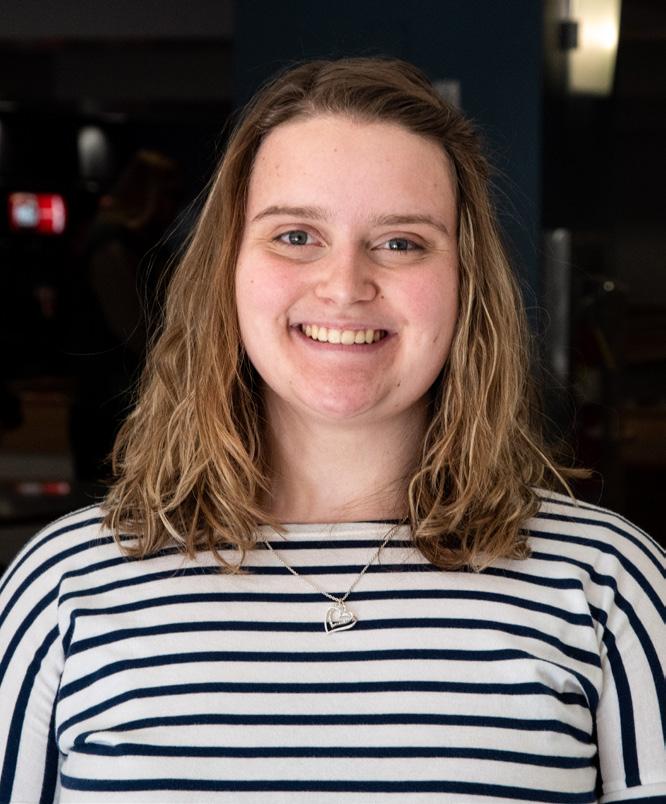
By Lacey Cintron STATESMAN REPORTER
Every year, students from the Utah State University Quinney College of Natural Resources don their flannels and lace up their boots for a night of community and tradition at the annual Logger’s Ball.
On Nov. 9, the ball commemorated 82 years of growth and development for QCNR.
Abbigail Lane is a fourth-year wildlife ecology and management student and USUSA senator for QCNR.
“Each year, we try to keep the spirit of the Logger’s Ball alive, which is fellowship, friendship, socialization, having a good time and connecting people within the university and the community,” Lane said.
The first Logger’s Ball was held in 1928 by a group of forestry students attending USU, then known as the Agricultural College of Utah. 40 years later, a small series of courses about ecology would become a fully realized college known as QCNR.
“It started as an informal gathering that the forestry students put together at the end of the logging season to celebrate,” Lane said. “Everyone would show up dressed in their field clothes, like a traditional lumberjack.”
Many keep the essence of the original event alive by dressing up in logger’s attire.
“I’m going for logger-chic this year,” said Ellie Tenbrink, a fourth-year forest ecology and management student. “I’ve got a dress and a flannel going on.”
The college continues to celebrate the ball, adapted with more formality and organization to suit the modern day.
“It’s evolved into a bit more of a structured event,” Lane said. “In years past, a lot of people will wear their cocktail dresses or white shirts and slacks, but a lot of people wear flannels, jeans and boots. It’s a fun dress code and allows people to dress to their comfort level.”
QCNR students embrace informality as an aspect of the college’s culture.
“The fact the dress code is not formal-required represents our college and the fact that we are more informal than I think many other colleges and departments here in the university,” Lane said. “That’s something everyone really leans into, and it’s a lot of fun.”
As senator, Lane leads a committee of students in planning major events for QCNR, such as the Logger’s Ball and Natural Resources Week.
“I got elected back in April, and I have been working on some aspects of the Logger’s Ball since June,” Lane said. “It’s been a lot of planning, and there’s a lot of logistics to go over.”
The QCNR Student Council aims to tailor each year’s ball to the desires of the students.
“It’s a lot of talking with the students and the council and hearing what they envision for the event,” Lane said. “It’s really important to me. I want students to feel represented. It’s a lot of outreach and advertising and trying to get momentum and support from within the college and the university as a whole.”
The event featured a meal and dessert accompanied by live music from local bands.
“I love that we have live music,” Lane said. “We try to get a band to play live music every year. Last year we had


The Last Wild Buffalo, which was a lot of fun — people just got up and started dancing, and it was a great energy that live music brings.”
The event also hosted a prize drawing and an array of other activities, acting as an opportunity for students and faculty to intermingle.
“It’s really fun to get to see your classmates and professors outside of a school setting,” Tenbrink said. “I’ve really liked getting to listen to music and dance, and we have cornhole tournaments, and it’s just kind of a fun social event.”
QCNR is the smallest college at USU Logan campus, with under 1,000 undergraduate and graduate students enrolled. Students within the college have formed tightknit communities, culminating in efforts such as the ball.
“The Logger’s Ball represents a really big facet of the culture in the QCNR,” Lane said. “We’re small, but it’s really fun because you get to know everyone.”


Lacey Cintron is majoring in psychology. She loves learning about the human mind, sharing stories and naps.
By Max Murrray
This past Friday night, as temperatures dropped below freezing, a small group of fewer than thirty people gathered at Whysound to listen to a 67-yearold man sing eccentric songs about alien abductions, ghost frogs and his ex-wife. This was no ordinary man — it was David Liebe Hart, an artist known for his peculiar performances that are as genuine as they are weird.
Liebe Hart is a puppeteer, singer-songwriter and actor, known for his work on Adult Swim shows like “Tim and Eric Awesome Show, Great Job!” and “Check it Out! with Dr. Steve Brule.” David’s work is surreal and blurs the line between performance art and honest expression. These appearances eventually led to his show “I Love David” in 2019, which was canceled after one season but can be found on YouTube.
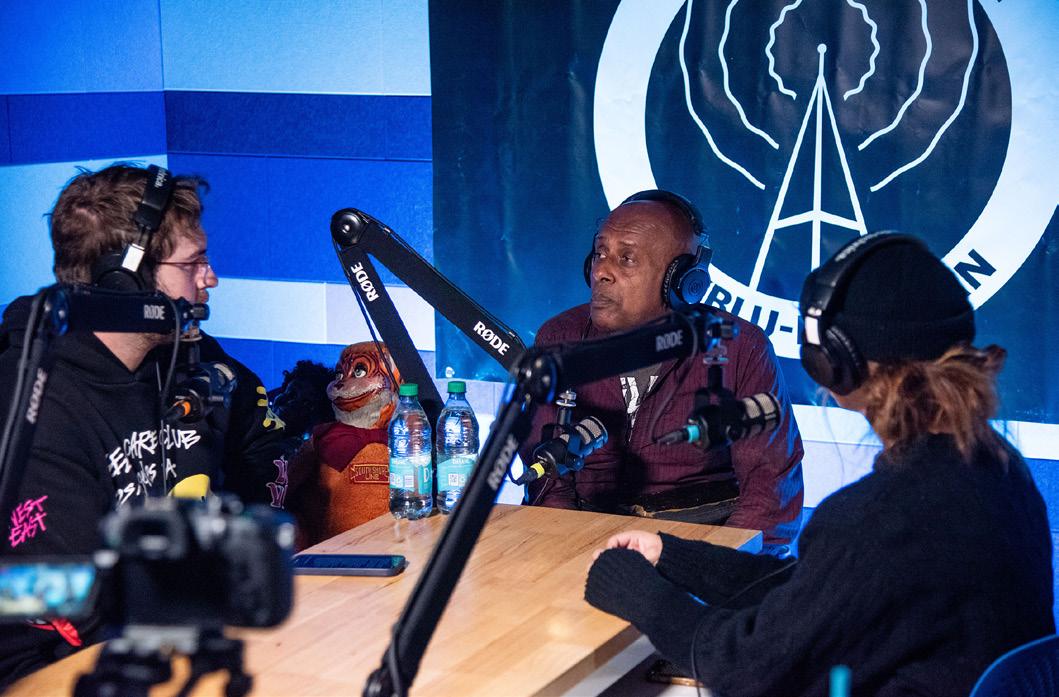

David was in Logan for one of the last stops on his North American tour. When he arrived at Utah State University’s Logan campus prior to the show for an interview with Aggie Radio, he seemed more like somebody’s grandfather than a touring musician. Recovering from his recent cataract surgery, David needed guidance throughout campus. He mentioned that he was cold and would love some gloves and a scarf. The team managed to find him a scarf, which he gratefully accepted.
As he got settled in, he requested a cheeseburger with bacon but also noted he would settle for a fish sandwich — and asked if somebody could get him Christmas stamps and copies of his Christian sheet music to pass out around town.
During the interview, David frequently strayed into lengthy, unrelated tangents, recounting stories of people he once knew who had passed away and sharing grievances about the mistreatment he’d received from actors, religious groups and even his bank. Resentment was a recurring theme as he continued to share his frustration over how others had wronged him.
Liebe Hart explained that this unfiltered honesty about his life experiences bleeds directly into his music and creative works.
“I just let it unfold, you know?” Libe Hart said. “I wrote a lot about ex-girlfriends that dumped me and left me, especially my ex-wife who left me for a younger guy in 1994.”
He also described his interest in UFOs, which he insisted is due to real encounters.
“I’ve been through a lot,” Liebe Hart said. “I write about UFO phenomena and what I’ve experienced.”
To the right of him sat one of his famous puppets, Jason the Cat. Jason is a large, orange cat puppet who looks like an old handmade porcelain doll. This puppet appears in some of David’s most popular works and is a regular part of his live shows.
The puppet was worn, dirty and falling apart. Liebe Hart mentioned it would take about $1,000 to fix Jason and then immediately promoted his Venmo account, which is just his personal phone number.
Before taking the stage at Whysound later that night, there was a moment during one of the opening acts where he got lost in the crowd while searching for the green room. While most people chalked this up to being part of his performance, it could more likely be attributed to the recent cataract surgery.
Once on stage, Liebe Hart performed short songs and continued his offbeat tangents between them, sharing everything from his family stealing his inheritance to being haunted by German Shepherd ghosts as a child. The audience seemed to embrace this unique and unfiltered approach and showed a great amount of support. The crowd knew the lyrics to many of his songs, and a mosh pit even ensued towards the end of the night.
“I would say the performance was transcendent,” said Mary Burke, an attendee of the show. “I’ve honestly never seen anything like it. I don’t think anybody has.”
As the show came to a close, Liebe Hart was wrapped up in the scarf he’d received earlier, which served as a reminder that while he was widely considered bizarre, he was also misunderstood.
“A lot of people that don’t understand things call things weird,” Liebe Hart said in his interview with Aggie Radio. ”You just need to believe in yourself. Don’t let nobody criticize you and put you down.”
While the world may be cruel to David Liebe Hart, he does not return that sentiment.
“Know that you’re just as good as any songwriter or actor or writer that I was friends with,” he said. “You’re a winner, not a loser!”


Lucy Johnson hosts of one of our newer shows on Aggie Radio, “Gooseytunes.” Lucy’s show explores and appreciates music by uncovering song characteristics, genre history and its impact. You can catch “Gooseytunes” every Tuesday at 2 p.m. on Aggie Radio 92.3!


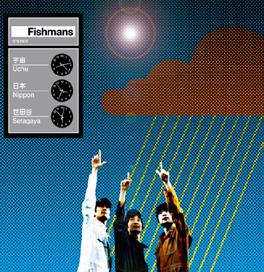



Leaf House Fishmans

On The Bound Fiona Apple

WEATHER REPORT Fishmans

Slomo Slowdive

All We Ever Wanted Was Everything Bauhaus

By Samantha Isaacson STATESMAN REPORTER
The ADHD mental health seminar at Huntsman Hall on USU Logan campus offered support to students who might be struggling with ADHD on Nov. 7.
It was held by the Business Council and gave strategies to students on how to manage ADHD in personal and professional settings.
Noelia Garcia is the student research coordinator for the council. She said the seminar was beneficial for students with and without ADHD
“This seminar provided a lot of information about why people with ADHD act the way they do and how they need people to have some compassion with them in regards to certain things,” Garcia said.
Brooklyn Monson is the data insights representative on the council. She said the seminar offered great insight on how to talk about ADHD in personal and professional relationships.
“She talked about being upfront with people that you work with,” Monson said. “Just telling them ways they can help you manage your symptoms. For example, if you need the lectures you’re listening to to have closed captioning or you need certain things written out or to-do lists rather than verbal instructions.”
Monson also said that the seminar stated how important it is for those navigating ADHD to be willing to put in the work.
“Making it clear to other people the symptoms that you have and what they can do to make it easier for you while also doing your best to find a middle ground,” Monson said.
Emerald Spencer is the USUSA business senator and event organizer for the council. She said she wanted to offer mental health resources for students through this seminar.
“This is something I’m passionate about — giving mental health resources that I had exposure to on campus and kind of targeting a different type of event that the Huntsman doesn’t usually have,” Spencer said. “A lot of them are very professionally focused, but I wanted to allow students who don’t always find those events interesting to have the mental health seminar be something interesting to them.”

Spencer said this event was also good support for students who can’t afford therapy.
“It’s hard for students to make appointments for therapy and for it to be free,” Spencer said. “I thought this event was very accessible.”
Spencer said the seminar’s speaker Chelsea Jones, social work student clinician at the Sorenson Legacy Foundation Center for Clinical Excellence, offered great insight for students on how to accept themselves for who they are.
“She didn’t really talk about strategies per se because the Sorenson Center wants to focus more on identity and accepting identity or whatever else somebody identifies with,” Spencer said. “They mostly just talked about what you want to get help with and specific things. Also, managing your relationships at school or with friends, and we all
collaborated on things that we do that work and how it’s different for everybody.”
Monson said the seminar was a good opportunity for students to connect with other students who were dealing with the same struggles.
“Most people that were there did have ADHD, and I felt like it was a safe space to share how it has affected them, along with the strengths and weaknesses that it caused in their lives,” Monson said. “It was a really good opportunity for people to talk with other people who also experience the same things as them because it’s not always easy to find.”
Monson said that lots of people felt safe to share their experiences with ADHD
“A lot of people shared personal stories that they had and different things that they did to cope with it and how being diagnosed has changed certain aspects of their lives,” Monson said.
According to Monson, she hopes the business school continues to host mental health events like this one.
“I love how we are normalizing how all these struggles are common and it’s nothing to be ashamed of,” Monson said. “The more we work together, the better we will all be.”
Students with ADHD can find resources to help support them through the Disability Resource Center and the Sorensen Center.
According to Monson, the Sorensen Center is currently offering one free 60-minute consultation for students.

Samantha Isaacson is a junior majoring in journalism with a double minor in art and psychology. She loves to read and spend time outdoors.
— sam.isaacson@usu.edu
By Brook Wood STATESMAN REPORTER
After the events of Election Day, the USU semester continued as usual. Many students may be experiencing mental distress from the election process or results, as it impacts the country as a whole and the lives of many students. Managing post-election stress and anxiety has become a priority as students prepare to navigate conversations with loved ones and seek effective ways to cope as they go home for the holidays.
Eri Bentley is a licensed psychologist and the executive director of CAPS. Her main areas of clinical expertise focus on group therapy, trauma, identity development and multicultural issues.
“I think election stress is also unique — everybody’s being impacted by this election and political changes one way or the other, right? So it is a collective stressor for the community, and I think that makes things a little bit unique,” Bentley said.
Bentley advised students to engage in self-care: meeting basic needs like getting enough sleep, food and physical activity. She emphasized the importance of engaging activities that are emotionally rejuvenating or comforting.
“I think talking and connecting with people is also critical, particularly because the current struggle related to this can be divisive and people can feel isolated,” Bentley said.
Something that can be difficult to navigate is the effects of social media on student’s mental health. Bentley remarks how it can create more stress and be used to avoid making real connections with people. On the other hand, students also use social media to talk, schedule and meet with friends.
“And then, I think keeping an eye on how you’re doing and how people around you are doing. Not all stress, like feeling sad or feeling done, require professional support,
but it might reach the point that seeking professional help makes sense. So looking out for yourself and for each other to see if things are getting worse.” Bentley said.
If students are continuously having trouble getting out of bed, missing classes or losing sleep, Bentley suggests utilizing the services and support that CAPS provides. These services include information regarding support during a crisis which can involve same-day appointments with a licensed professional, short-term therapy and support connecting with long-term service providers in the community.
Bentley also discussed the many support groups within the CAPS community that can benefit student’s lives and connect them with other people.
“It’s a great way to provide the service to a lot of students. Isolation, disconnection and loneliness are things that many students experience, even if it’s not every day. Students talk about experiencing loneliness here and there, and it has an impact on our well-being. Support groups and group therapy is a great way to address that challenge,” Bentley said.
While Bentley provided important advice and information on dealing with post-election effects on student’s mental health, a history professor discussed peace-building strategies to utilize this holiday season.
Patrick Mason is a professor of religious studies and history and an advisor for the Heravi Peace Institute. In addition to being a history professor, he has a master’s degree in international peace studies and is a proponent of peace-building at USU.
Mason emphasized the importance of taking a peaceful approach, especially if you know there is going to be a disagreement. He talked about how unhelpful it is to enter a conversation with a relative aggressively.
“I think a second principle is to see other people as peo-

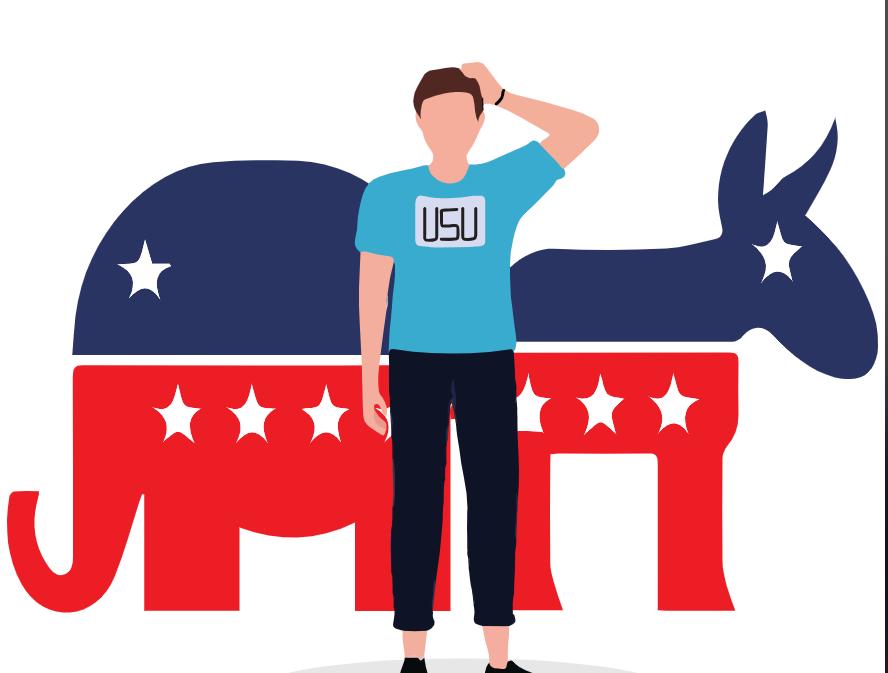
ple. In other words, rather than reducing them to, essentially, an object or a position because of the way they voted or they believe something about a particular issue, actually, to recognize that they are complex human beings,” Mason said.
Mason talked about how the first thing to realize is that they are your family and not just what their vote was or what they believe in. He also discusses the significance of drawing boundaries with family members, especially if one is trying to converse aggressively and attack you rather than discussing out of curiosity.
Mason included some examples of how to turn the conversation around and enforce these boundaries.


Brook Wood is working towards receiving a bachelor’s degree in literature. When they aren’t writing or reading, they enjoy playing the violin in the USU Symphony Orchestra and the occasional sweet treat. — a02451156@usu.edu



The turkey is also known as pípila, turkey, pípilo, huilo, totol or guajolote.


The word guajolote comes from the Nahuatl huexólotl and can be translated as large monstrous bird.


By Rain Schenck STATESMAN REPORTER
With just two years on the Utah State University club scene, the USU Disc Golf Club has fostered a spirit of inclusion and community that has brought in players of all backgrounds. From beginners to seasoned players, the club has grown exponentially, sporting a team of 25 members to date. The club began in 2022 when current president Jared Tobler and two friends took the initiative to form the group.
“I always did competitive sports growing up,” Tobler said. “I figured, let’s make this happen.”
Joining an unfamiliar sports club sounds like uncharted territory, but for graduate student Drew Rogers, it was a comfortable place to start.
“Inclusive,” Rogers said. “It felt super welcoming.” Rogers has only been playing disc golf for three months but feels as much a part of the team as anyone else.
“Honestly, this club is a great spot for people starting from the bare minimum to those who want to compete,” Tobler said. “Regardless of where you’re at, you’ll have an opportunity to play. It’s a healthy place for people who just want to casually play but also for those who want to learn and grow.”
Welcoming newcomers and challenging experienced players is a balance the club strives to achieve at the individual and team levels. With player Philip Romney and coach Joseph Kozlowski holding pro-level ratings, the team isn’t just a casual commitment.
“We train every day,” Romney said. “I’m always trying to master one skill at a time.” From individual workouts and training regimens to weekly practices as a team, the players are encouraged to take charge of their own personal development.
The inclusivity and competitive nature of the club fosters a unique dynamic where members, regardless of their skill level, encourage each other.
“It’s a really good balance between having fun and competing,” Rogers said.
As competition heats up, the team will play through until the end of the school year, making for what can be a taxing season. To keep the momentum rolling, the team
aspires to qualify for nationals, win an event and create a women’s team. The team has already accomplished its goal of qualifying for nationals. The athletes will face off against competitors in April 2025.
“It’s exciting,” Tobler said. “This year’s about building.” This developmental process starts from leadership and has trickled down to the rest of the team. And it’s not just USU’s club. It’s the sport.
“One of the things I love about disc golf is the support you see. Even from competitors,” said Lucas Waddoups, current member of the presidency. “Even if you’re competing against each other. It’s not something I’ve seen much in other sports.”
To those considering joining, “I’d encourage people to come. Give it a go. And who knows, you could fall in love with it,” Rogers said.
To follow the USU Disc Golf Club, find them on Instagram @usudiscgolfclub and join what they call, “The best USU club for throwing plastic discs at baskets.”

Rain Schenck is from Syracuse, Utah. She’s a senior at USU studying journalism and communications. If she’s not writing or reading, she can be found at any competitive event or game night, throwing a ball or yelling at a card game.
— A02339636@usu.edu


By Landri LaJeunesse STATESMAN REPORTER
Twice a week, Tess Meeker pumps loud music into the loft speakers at the ARC and gets moving — she leads a high-fitness workout class, and she loves it.
“It’s something that I look forward to every week,” Meeker said.
While getting sweaty, she teaches and encourages those in her class through movement. Plus, she loves getting to know the people she coaches each week personally.
“I just love the relationships and the community that there is here and getting to make friends in and outside of class,” Meeker said.
Through upbeat music and movement, she leads her class every Tuesday and Wednesday in cardio and lowimpact aerobic workouts. For Meeker, the focus of these high-fit classes is on being fun.
“It’s so much fun, and I get my dance fix,” Meeker said.
Before Meeker became a fitness instructor, she was a dancer and a cheerleader. Always looking to stay active, she says the decision to pick up high-fit came after she got home from serving a mission for the Church of Jesus Christ of Latter-day Saints.
“I got back from my mission, and I needed to get back into fitness,” Meeker said. “I was in a running rut, and so I got back into high-fit, and I just fell in love with it.”
And by “getting back into it,” she means the exercises she used to do with her aunt when she was younger.
“My aunt was one of the first high-fit instructors, and so growing up, I went to all her classes,” Meeker said.
The memory of doing high-fit with her helped Meeker get back into movement and fitness. Now, she likes to share that with others because it helps her push her limits.
“I like pushing myself,” Meeker said. “I wanted to teach it because it’s hard.”
Meeker has a saying in life, something she calls “embracing the suck.”
“You’ve got to embrace the suck,” Meeker said. “That’s my favorite saying.”
While she believes it’s important for people to make moving their bodies a priority, the best part of being a fitness instructor comes down to building people up. Through her “embracing the suck” mentality, she hopes those who attend her class feel uplifted and energized by the end of her sessions.
“I just hope that they get a high out of it,” Meeker said. “What I love about high is that you just feel good about yourself. You release those endorphins and hormones.”
Even if it’s just for an hour twice a week, she hopes her class can get more out of the session than just those feel-good feelings.
“I just hope that they feel welcome and confident in themselves and that they did something hard and to know that they have somebody who cares for them if they need anything,” Meeker said.
Meeker’s friend and class attendee Bryn Riley-Jensen thinks Meeker does a great job at getting that message across.
“She’s really high energy and just silly and doesn’t take it too seriously,” Riley-Jensen said. “Everyone’s too focused on themselves to care about or judge other people.”
Maggie Batholomew, a regular of Meeker’s classes, agrees that Meeker curates an environment fitting for a class focused on uplifting.
“Everyone is super, super welcoming and just kind of excited to be there,” Bartholomew said. “High-fit is such high-energy.”
With finals approaching and the days getting shorter, Bartholomew thinks Meeker’s classes keep her sane while she’s tackling the bigger challenges.
“I’m super busy all the time, so just having two hours out of the week that I force myself not to think about school or work or anything — it’s so refreshing,”
Bartholomew said.
But at the end of the day, and the end of every class, Meeker believes high-fit is about who you’re with, not just breaking a sweat.
“I do it for the people I love and my friends,” Meeker said. “There’s just love.”


Landri LaJeunesse is a junior studying journalism and communications with a minor in yoga studies. Catch her radio show “RADIO ESPRESSO” Wednesdays at 10 a.m.
- landri.lajeunesse@usu.edu


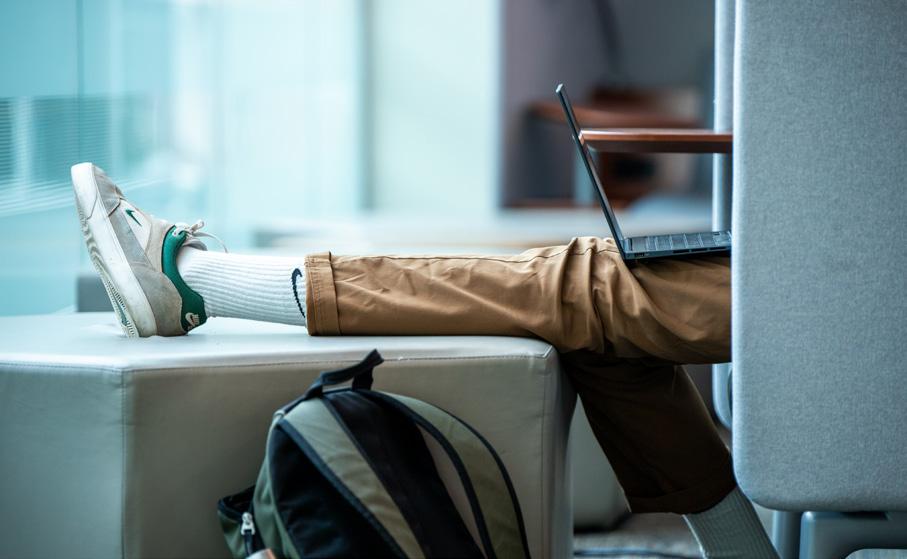


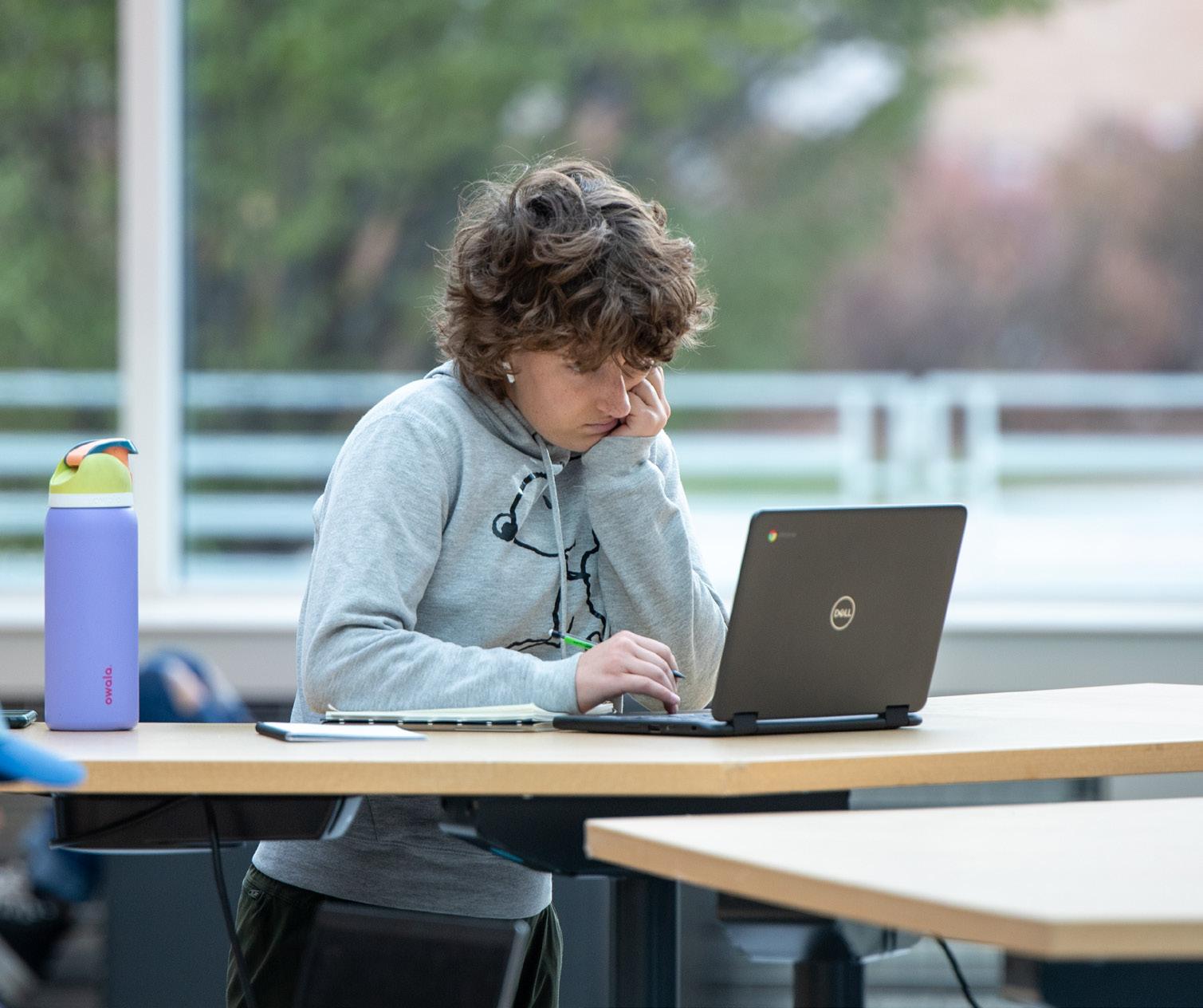

By Ella Stott STATESMAN REPORTER
The first time I was graced with the opportunity to watch “Teen Beach Movie”, I was nine yearsold at my friend’s birthday party. Everyone was raving about how good the movie was, and I honestly thought they were over-selling it, but from the second the first notes of “Cruisin’ for a Bruisin’” played, I was sold.
Not only does this movie have catchy songs and memorable lyrics, but it has broader themes that can be applied to society as a whole. It was very ahead of its time for a 2010s Disney Channel movie that included the words “bikini wonderland.”
The movie starts at the end of summer, and surfing couple Mack and Brady are sad the days without school are coming to an end. Unbeknownst to Brady, Mack is going to leave her grandpa’s beach house the following day to move to the city with her aunt and attend a prestigious high school. She tries to work up the nerve to tell him but chokes before her aunt comes, revealing the news to Brady. The two regretfully break up because they don’t want to be long-distance.
Before leaving the next day, Mack decides to surf one last time because the waves are record high. However, a storm breaks loose during her surf, and Brady jet skis out to save her — if you’ve ever wanted to see Ross Lynch on a jet ski, this movie is for you. The two go under the water as the giant waves consume them, leaving the crowd wondering what happened to them.
Suddenly, the two wash up on a different beach and are immediately pummeled with songs, colors and energy that can only be from Brady’s favorite movie from the 1960s, “Wet Side Story.” A play on “West Side Story,” the
movie involves a surf and turf war that usually escalates and ends when the lead surfer Tanner and lead biker Lela fall in love.
This time, though, the movie is different. Mack and Brady accidentally insert themselves into the story while attempting to find home and prevent the two leads from their iconic love-at-first-sight moment. Without this, the entire plot of the movie is shifted, leaving Mack and Brady scrambling to pick up the pieces while threatening to get stuck in the movie forever.
And of course, Brady’s side mission is to convince Mack to stay at the beach where she is happy and where she can be with him.
“Teen Beach Movie” might seem like Disney’s fun take on “Romeo and Juliet” at first, and while it might be a light-hearted, Grammy-worthy film on the surface, it’s much deeper than that.
The movie explores how polarized groups can find similarities and reasons to fight together. While common with other “Romeo and Juliet” retellings, the themes of opposition extend beyond the general surf and turf war. While the characters in the movie have to get over their differences to unite against a common enemy, Mack is having an internal battle between doing what she believes her mom would’ve wanted for her, going to her aunt’s old high school, and what she wants for herself, to do what she loves. It’s only when the surfers and bikers as well as Mack can find common ground between their issues that they succeed.
The friendship between Mack and Lela is revolutionary too, especially when compared with Disney Channel movies that traditionally have a “girly girl” and a “tomboy girl” being portrayed as direct opposites with hostile relationships. However, although the two girls have different styles that they sing about in “Like Me,” they become quick best friends, supporting each other throughout the movie.
The movie explores how polarized groups can find similarities and reasons to fight together.
— Ella Stott
Mack also teaches Lela it’s okay for girls to want more than to be with boys. She tells Lela that girls can do anything boys can do, which promotes Lela to expand her scope beyond biking and finally try what

she’s always wanted to do, surfing. And she’s as good as any boy. This also sets up the sequel “Teen Beach 2.” Disney kind of dropped the ball on this one, with almost none of the songs being memorable, but it was still enjoyable to see the characters come back together and learn they are more than how others view them.
“Teen Beach Movie” is filled with hard-hitting quotes, important messages, beautiful love stories and some of the most iconic Disney music. Trust me, “Meant to Be” is a perfect love song.
This movie was so worth the rewatch.

Ella Stott is a junior studying English. Her love of satirical comedy lends her well to being an expert on critquing Disney Channel movies.
— ella.stott@usu.edu



www.sudokuoftheday.com.

